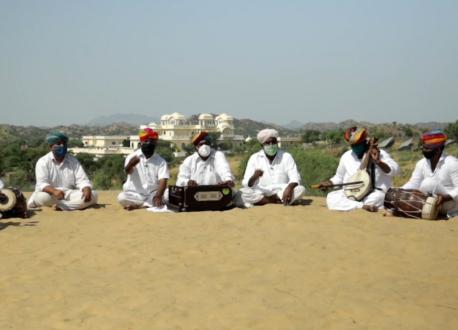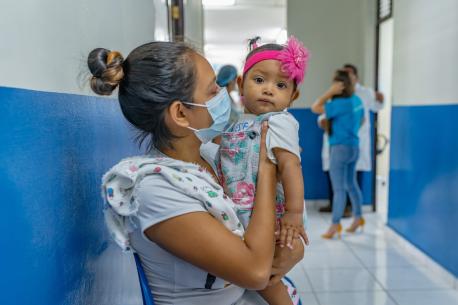
When Oxygen Is a Luxury
Delivering vaccines is just one way UNICEF is working to end the pandemic. Another top priority is making sure health facilities have enough oxygen on hand to treat their patients.
A patient who is suffering from a severe respiratory illness often needs supplemental oxygen to stay alive. In many parts of the world, however, medical oxygen is an inaccessible luxury.
That is why, when the pandemic hit, and facilities became overrun with COVID-19 patients — many of whom needed oxygen — UNICEF quickly stepped up shipments of oxygen and oxygen-related supplies to hospitals in need in dozens of countries.

UNICEF delivered $1.5 million worth of oxygen and related supplies — oxygen cylinders, oxygen flow meters, pulse oximeters, medical masks and face masks — to Bangladesh to support the country's fight against COVID-19. © UNICEF/UN0506812/Rahman
Improving access to therapeutic oxygen remains an important part of UNICEF's global COVID-19 response to this day. It also serves broader, longstanding goals of improving child survival from treatable diseases such as pneumonia.
Delivering essential items to support oxygen delivery to patients
Among other items, UNICEF has increased its shipments of oxygen cylinders and oxygen concentrators. An oxygen concentrator is a portable machine that removes nitrogen from the air to produce a concentrated source of oxygen for the patient. In the first year and a half of the pandemic, UNICEF delivered more than 20,600 oxygen concentrators to 94 countries.
Also during that time, UNICEF distributed over 42,500 accessories, including pulse oximeters, flow splitters, oxygen analyzers and humidifier bottles, and over 1 million consumables such as nasal cannulas, face masks and tubing — all essential equipment to ensure oxygen therapy can be safely administered to patients.
While speeding delivery of these essential items, UNICEF innovators have been working with partners to develop a new type of concentrator — one that is more durable and can better withstand challenging conditions that are typical of environments where UNICEF works, such as heat, humidity and dust.
The Oxygen Concentrator Innovation Project aims to help improve access to lifesaving oxygen not just for COVID-19 patients but also for children suffering from pneumonia and other respiratory diseases. Some 4.2 million children in low- and middle-income countries suffer from pneumonia every year; about 800,000 of these cases are fatal, making pneumonia the leading cause of death from infectious diseases in children under age 5 worldwide.
An innovative solution that increases oxygen supplies to meet emergency needs
A different innovation from UNICEF is already available: the Oxygen Plant-in-a-Box.
An oxygen plant is a system that can produce enough medical oxygen to treat dozens of patients at a time. What UNICEF did was to devise an all-in-one solution that makes the system easier to procure, ship and get up and running quickly at the other end.

A skid-mounted oxygen plant UNICEF helped install at Kazumu Central Hospital in Malawi to support the COVID-19 response and to help meet future health needs. © UNICEF/UN0461922
A third way UNICEF is helping to improve oxygen supply in health systems worldwide is with the Oxygen System Planning Tool. Countries map out their needs, and UNICEF provides equipment, technical support and training for health staff as needed.
Learn more about how UNICEF is working to strengthen country health systems to meet the health needs of vulnerable children and families.
Support UNICEF's efforts to end the pandemic. Donate today.
TOP PHOTO: Oxygen cylinders from UNICEF arrive in Dhaka, Bangladesh, to be delivered to health facilities around the country. © UNICEF/UN0496771/Sujan
HOW TO HELP
There are many ways to make a difference
War, famine, poverty, natural disasters — threats to the world's children keep coming. But UNICEF won't stop working to keep children healthy and safe.
UNICEF works in over 190 countries and territories — more places than any other children's organization. UNICEF has the world's largest humanitarian warehouse and, when disaster strikes, can get supplies almost anywhere within 72 hours. Constantly innovating, always advocating for a better world for children, UNICEF works to ensure that every child can grow up healthy, educated, protected and respected.
Would you like to help give all children the opportunity to reach their full potential? There are many ways to get involved.




